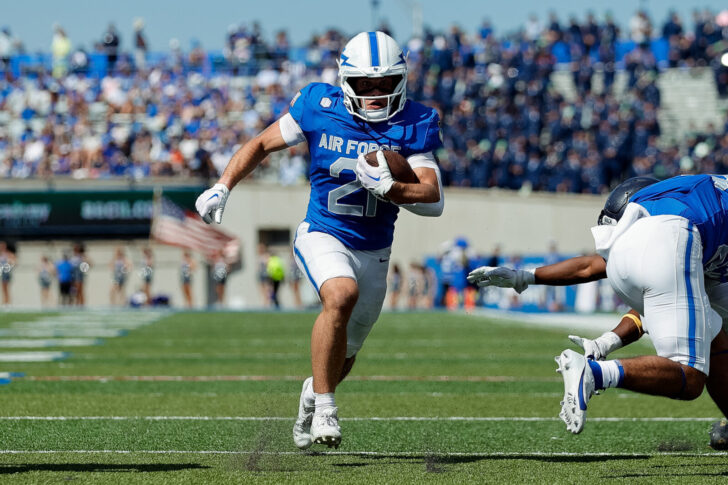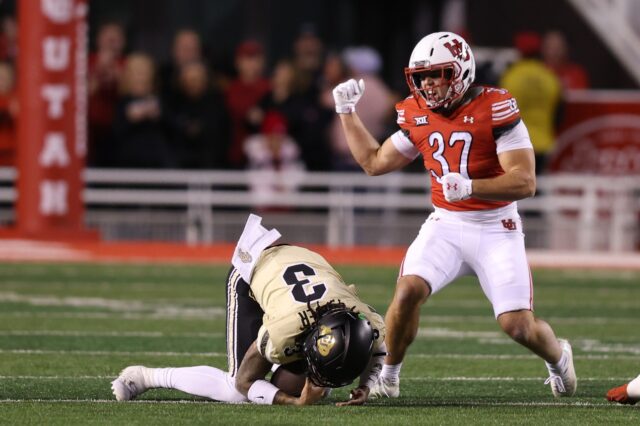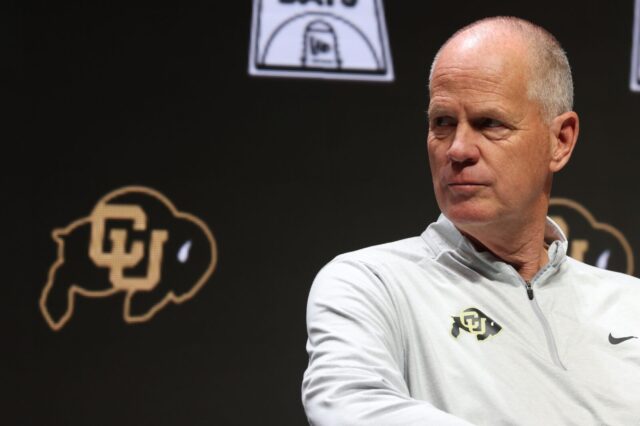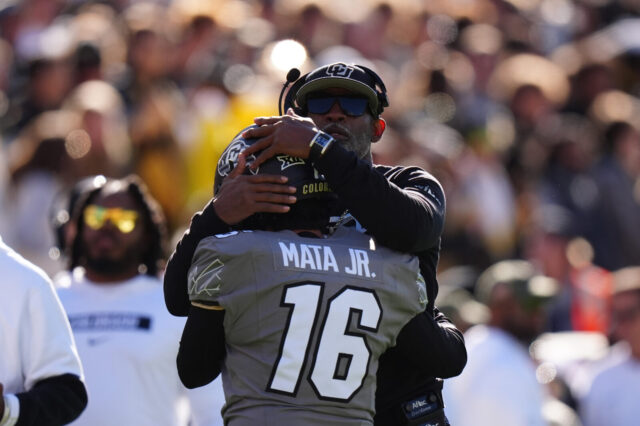Strike 2: The news that four Mountain West schools, including Colorado State, were leaving the conference and joining the rebuilding efforts of a new-look Pac-12 came as a surprise, at least given the timing. In the big picture, it was totally predictable. The most surprising part wasn’t the schools that were leaving. It was who wasn’t, at least not yet. Namely UNLV and Air Force.
The Rebels and their red-hot Las Vegas market should be pretty much a shoo-in to join CSU, San Diego State, Fresno State and Boise State in making the move at some point, probably soon. But talk surrounding the one other necessary addition – the Pac-12 needs to get to eight schools to remain in good standing for the 2026 season – centered on schools like UT San Antonio, Memphis, Tulane and even Montana. Hardly even a mention of the football program that over the past decade plus has very clearly been the best one in the state of Colorado.
Why isn’t Air Force an obvious choice here? What are we missing?
Okay, this year Air Force appears to be down, at least early in the season. With 18 new starters, the 2024 Falcons have struggled to 1-2 start that includes losses to San Jose State and Baylor. The vaunted AFA offense has mustered just 31 points in three games, including 21 in a win over FCS Merrimack College. However, since head coach Troy Calhoun took over in 2007, the Falcons have posted 14 wins (and just two losses) – including the last six straight – over CSU, and have beaten CU the only two times they played, in 2018 and 2022. Calhoun’s teams have been to 13 bowl games in that span, including beating a Power conference opponent the last three times they faced one. The coach has 131 career wins and counting. CU and CSU can’t come close to that resume.
And considering that Air Force has become representative in basketball and pretty darn good at baseball the past few seasons, the Academy is on very solid ground athletically. And academically there are certainly no concerns.
So why isn’t Air Force getting the conference promotion it deserves?
Some who follow the program point out the lack of local fervor for the home team as a sticking point. AFA is a national brand more than a local one, and local markets (aka local TV viewership) matter is these kinds of realignment decisions. There’s also speculation that Academy officials may have rebuffed advances from the Pac-12, preferring to stay where they are. That would be a puzzling stance if it were true.
Speculation is that the American Athletic Conference will come after Air Force and try to add AFA to a league that already has Army and Navy. But that would be a step backwards for the Academy, especially if the AAC loses any of its remaining top members to a bigger conference. Certainly money is a big factor – it’s going to be expensive to make any sort of move unless the Mountain West dissolves completely, and that seems to be a remote possibility considering the reported $111 million that conference is going to get – and be able to disperse to its members – in exit fees from the departing four schools. But the Pac-12 is helping with that, so money should not be an overriding factor at AFA.
Air Force doesn’t have to do anything. They have options. But the only move up toward the wild blue yonder would be to join the Pac.
There are no longer “automatic qualifier/Power” college football conferences. The CFP takes the five highest ranked conference champs, period. So the new Pac -2 – provided they make the next right move(s) and add Air Force and UNLV, will have just as good a shot at the big postseason prize as any other conference, and the upgrade will likely provide a better shot at potentially gaining an at-large bid for a conference member, too.
Nobody believes that conference realignment – or a major restructuring of all the conferences – is close to being over. But as Cal and Stanford proved (and their situation is awful at this moment) if you snooze you lose.




